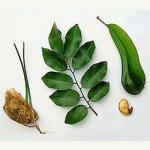Business Overview (Introduction)
 The term "herbs" has many meanings. The most accepted one is "plants that are not used solely as vegetables or ornaments." Herbs are multiple use plants useful for culinary, cosmetic, industrial, medicinal, landscaping, decorative, and fragrance purposes.
The term "herbs" has many meanings. The most accepted one is "plants that are not used solely as vegetables or ornaments." Herbs are multiple use plants useful for culinary, cosmetic, industrial, medicinal, landscaping, decorative, and fragrance purposes.
They include vegetables such as garlic, flavoring items such as red peppers or mint, decorative flowers such as roses, various oilseed shrubs, ground-cover plants such as lemon thyme or perennial chamomile, edible flowers such as nasturtiums, trees such as the linden or bay, and plants such as chrysanthemums that may be intercropped and used as an alternative to pesticides.
Herbal processed products include fresh and dried flowers; leaves, barks, roots, and seeds-dried, ground, or dissolved powders; essential oils (as distinguished from petroleum or synthetic oils); and oleoresins, naturally occurring mixtures of oil and resin. Some other products are condiments, spices, or food seasonings; teas; dyes; cosmetic products; and so-called health foods.
The world market is extremely volatile, with prices ranging from less than $1 a pound for some herbs to more than $100 a pound for others. Political situations in third world countries (where much of the world production is found) causes shortages, and prices fluctuate widely. Increasing commercial herb production in the United States will help maintain some equilibrium in supplies and the stability of sellers' prices.
Consumer and producer interest in herbs is increasing. A decade ago it was difficult to find books on herbs. Today there are dozens of books published on all aspects of the subject. Increasing consumer interest has created more competition in herb production by growers.